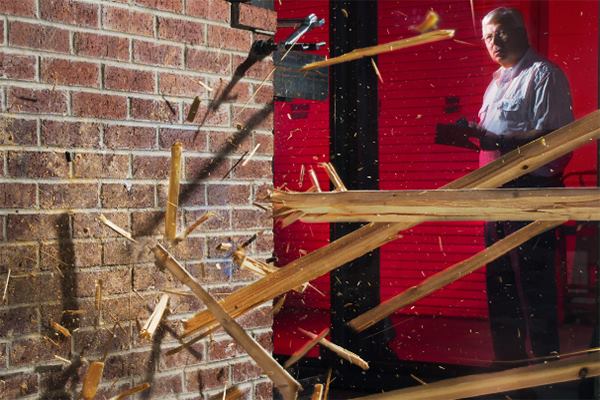Get a bunch of inventive contractors together with a case of beer and you get the beer cannon.
Engineers from the Forest Products Laboratory (FPL) had almost as much fun (sans beer) with the debris launcher, an air cannon designed to launch 2x4s into wall sections at speeds of approximately 100 miles per hour. Of course, engineers have been doing this for quite some time (see, for example, the Texas Tech wind cannon), but this time the goal was to come up with more affordable tornado shelters. Most safe rooms are constructed from concrete, CMUs or steel-plated wood framing (see FEMA’s “Taking Shelter from the Storm”); the FPL had been charged with exploring less expensive options using wood.
The FPL’s winning safe room design used three 2x8s nailed and glued together to form a beam with the center ply offset to create a tongue-and-groove configuration. The beams were then stacked and interlocked log-cabin style to create the safe room walls. In the impact tests, 2×4 missiles left a 2-inch-deep impression in the outer 2×8 layer, but usually didn’t create any flex or distortion of the interior surface of the wall. If the interior wall surface was bent or broken, the test is considered a failure.
According to the Journal of Wind Engineering and Industrial Aerodynamics, researchers from Clemson University used similar test methods to evaluate the strength of cross-laminated-timber (CLT) panels – a construction-type similar to the FPL wall made with glued wood rather than bolted beam stacks. The Clemson study found that 3-ply CLT panels (typically 100-mm-thick, or slightly less than 4 inches, as compared the 4 1/2-inch thick beam stock used in the FPL study) had “a high likelihood of surviving impacts from EF-2 and EF-3 level missiles” but were not strong enough to resist EF-4 and EF-5 level tornados. “For qualification as a material for safe rooms,” the researchers concluded, “thicker panels and additional connection design would be required.”
